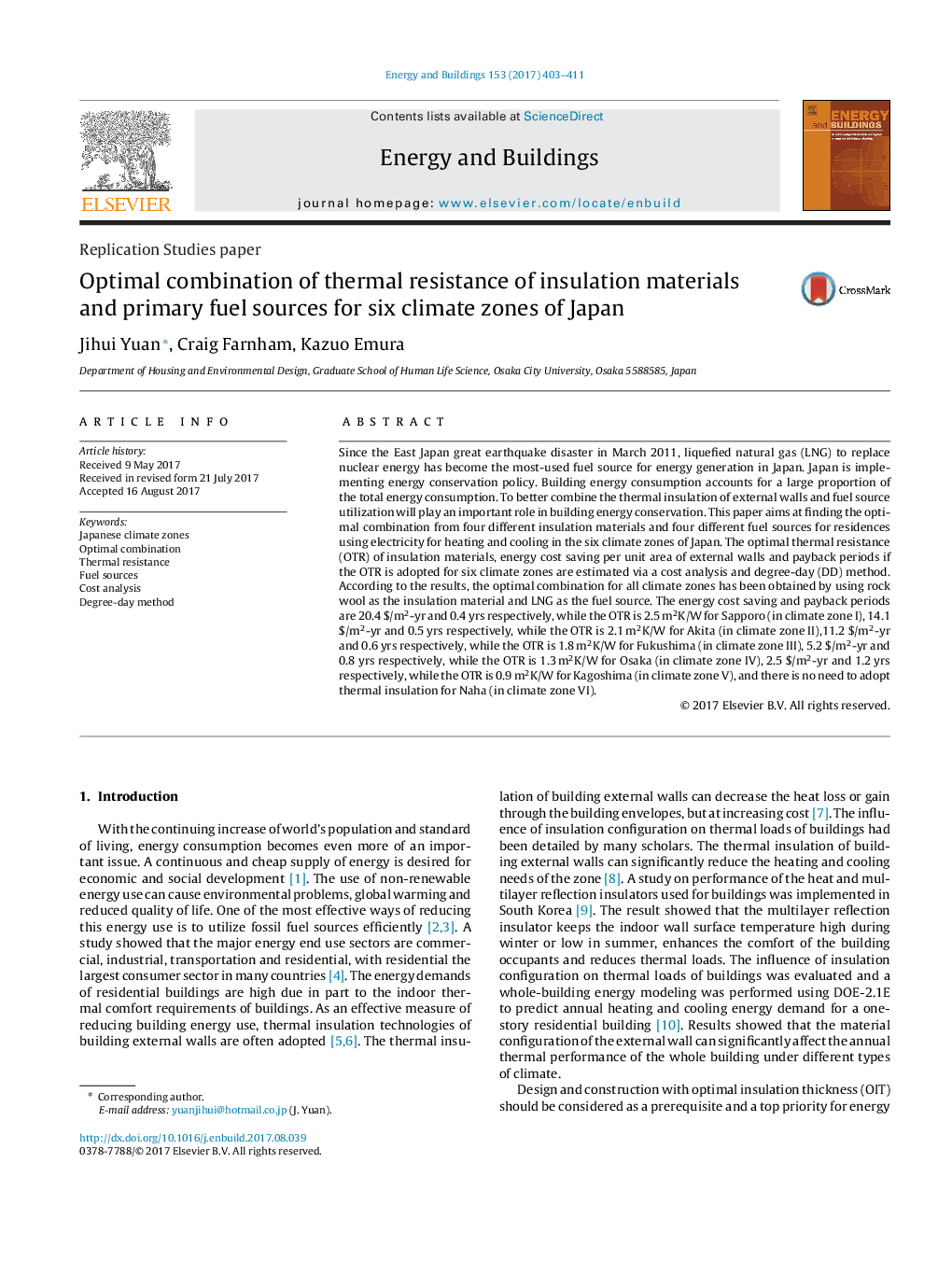| کد مقاله | کد نشریه | سال انتشار | مقاله انگلیسی | نسخه تمام متن |
|---|---|---|---|---|
| 4918996 | 1428937 | 2017 | 9 صفحه PDF | دانلود رایگان |
عنوان انگلیسی مقاله ISI
Optimal combination of thermal resistance of insulation materials and primary fuel sources for six climate zones of Japan
ترجمه فارسی عنوان
ترکیب مطلوب مقاومت حرارتی مواد عایق و منابع سوخت اولیه برای شش مناطق آب و هوایی ژاپن
دانلود مقاله + سفارش ترجمه
دانلود مقاله ISI انگلیسی
رایگان برای ایرانیان
کلمات کلیدی
مناطق آب و هوایی ژاپن، ترکیبی بهینه، مقاومت حرارتی، منابع سوخت، تجزیه و تحلیل هزینه، روش درجه روز
موضوعات مرتبط
مهندسی و علوم پایه
مهندسی انرژی
انرژی های تجدید پذیر، توسعه پایدار و محیط زیست
چکیده انگلیسی
Since the East Japan great earthquake disaster in March 2011, liquefied natural gas (LNG) to replace nuclear energy has become the most-used fuel source for energy generation in Japan. Japan is implementing energy conservation policy. Building energy consumption accounts for a large proportion of the total energy consumption. To better combine the thermal insulation of external walls and fuel source utilization will play an important role in building energy conservation. This paper aims at finding the optimal combination from four different insulation materials and four different fuel sources for residences using electricity for heating and cooling in the six climate zones of Japan. The optimal thermal resistance (OTR) of insulation materials, energy cost saving per unit area of external walls and payback periods if the OTR is adopted for six climate zones are estimated via a cost analysis and degree-day (DD) method. According to the results, the optimal combination for all climate zones has been obtained by using rock wool as the insulation material and LNG as the fuel source. The energy cost saving and payback periods are 20.4 $/m2-yr and 0.4 yrs respectively, while the OTR is 2.5Â m2K/W for Sapporo (in climate zone I), 14.1 $/m2-yr and 0.5 yrs respectively, while the OTR is 2.1Â m2K/W for Akita (in climate zone II),11.2 $/m2-yr and 0.6 yrs respectively, while the OTR is 1.8Â m2K/W for Fukushima (in climate zone III), 5.2 $/m2-yr and 0.8 yrs respectively, while the OTR is 1.3Â m2K/W for Osaka (in climate zone IV), 2.5 $/m2-yr and 1.2 yrs respectively, while the OTR is 0.9Â m2K/W for Kagoshima (in climate zone V), and there is no need to adopt thermal insulation for Naha (in climate zone VI).
ناشر
Database: Elsevier - ScienceDirect (ساینس دایرکت)
Journal: Energy and Buildings - Volume 153, 15 October 2017, Pages 403-411
Journal: Energy and Buildings - Volume 153, 15 October 2017, Pages 403-411
نویسندگان
Jihui Yuan, Craig Farnham, Kazuo Emura,
